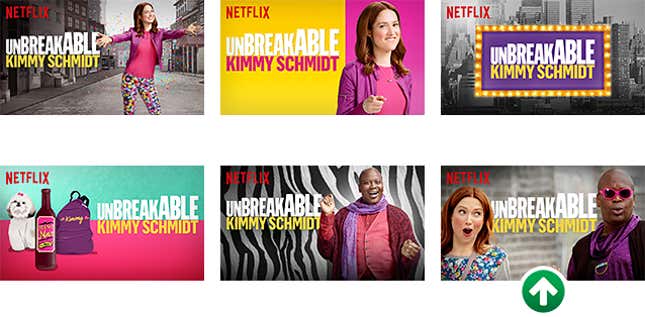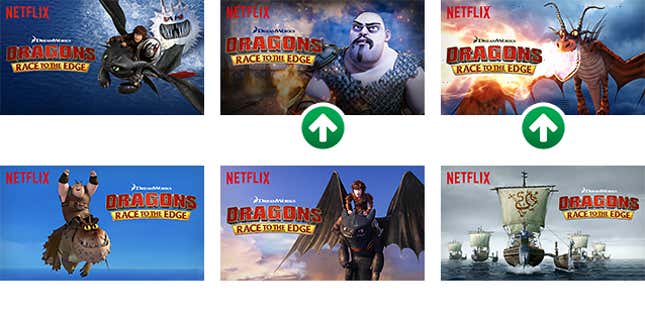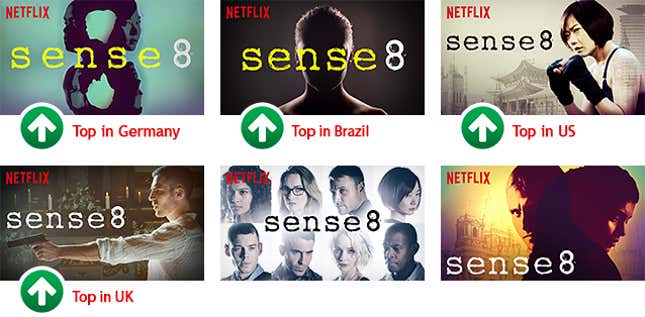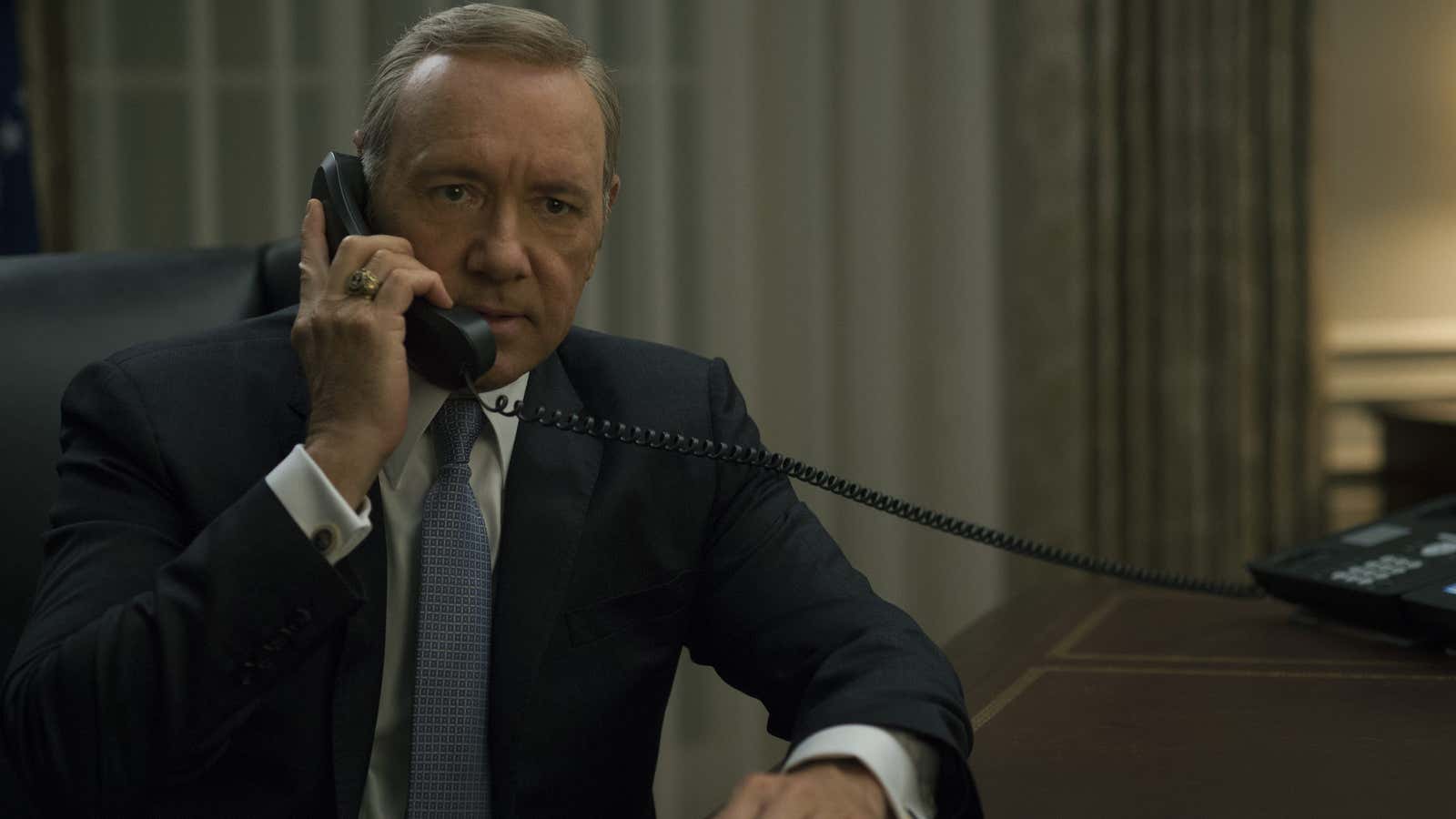Every time you watch something on Netflix, Netflix is watching you back.
If you’ve used Netflix recently, you may have been an unwitting participant in the global streaming service’s experiments. In 2014, the company conducted research that revealed users spend only about 1.8 seconds deciding if they want to watch something. It also found that most users pick what to click on by assessing the thumbnail images that Netflix presents to them upon logging in.
Through a series of A/B tests, the company realized that it could greatly widen a TV show or movie’s audience simply by changing those thumbnail images. Netflix then implemented a system that tests images based on this research.
Netflix once used artwork from the studios for thumbnails. But that art wasn’t designed to be viewed in a stream, competing with other images. Today, Netflix designs its own images based on what it has found users are most likely to click on.
In dual blog posts—one by Nick Nelson, head of Netflix’s creative services, and the other by Gopal Krishnan, a software engineer—Netflix detailed the consumer testing from design and data perspectives. Here’s what they found:
We love complex emotions
While the brooding, aloof archetype is popular in TV characters, such emotions don’t necessarily entice Netflix users. Netflix users greatly prefer seeing a character with interesting facial expressions over one that’s “stoic or benign,” Nelson noted.
In the below Unbreakable Kimmy Schmidt test, for instance, users engaged with the last image—in which Kimmy and her friend Titus both have strange, goofy looks on their faces—a lot more than the others, which either feature more straightforward expressions or don’t feature any faces at all.

Bad guys are more interesting
Netflix discovered that its users respond better to images of villainous characters than they do to heroes, especially in kids movies and action genres. That makes sense. Many of TV and film’s most iconic characters are villains–Darth Vader in Star Wars, Norman Bates in Psycho, and Hannibal Lecter in The Silence of the Lambs, just to name a few.
Using villains is also a good way to differentiate shows or films from each other, especially ones that are part of a series. If you see the Joker, for instance, you immediately know that image is for the movie The Dark Knight, as opposed to Christopher Nolan’s other two Batman films in which the Joker does not appear.
In images for the animated series Dragons: Race to the Edge, two characters clearly outperformed the others: a menacing, fire-breathing dragon, and a buff, brutish guy complete with fiendish facial hair.

Preferences differ across the globe
The images that appeal to a Netflix subscriber in the United States may not be as alluring to someone scrolling through Netflix in Brazil. These disparities are based on a number of factors—conscious or otherwise—including cultural tastes and racial identification. Netflix used the example of Sense8, a show with characters from all over the world, to highlight how different users’ preferences can be depending on where they’re streaming from.

